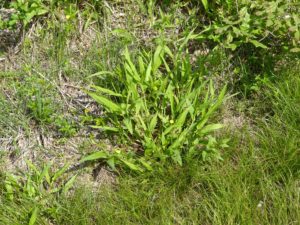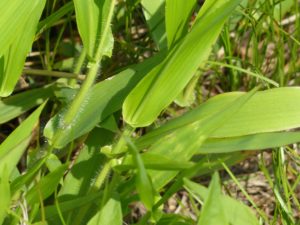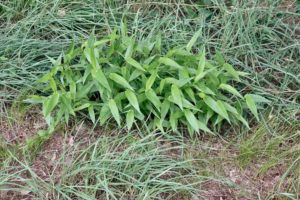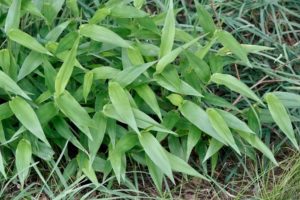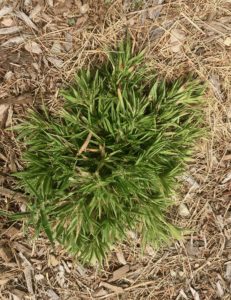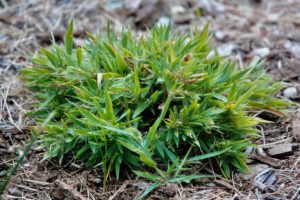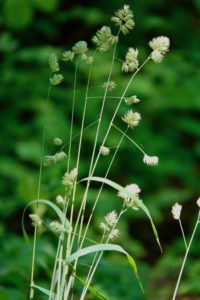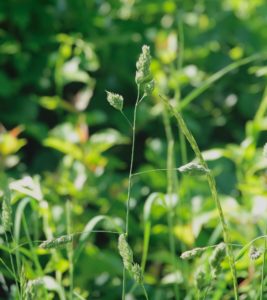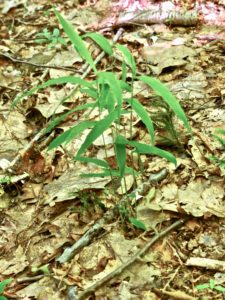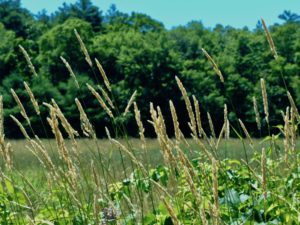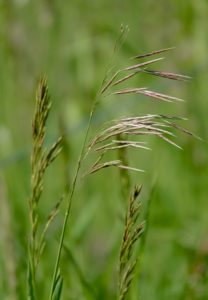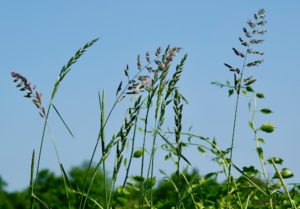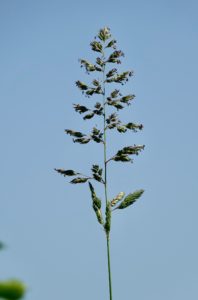SIGHTINGS – GRASSES
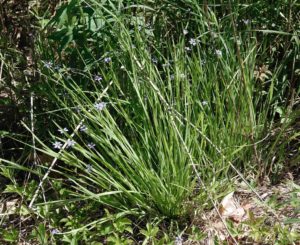
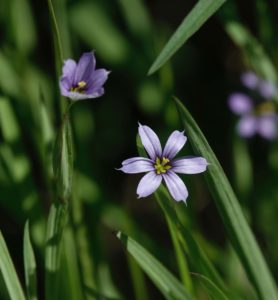
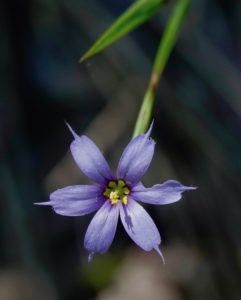
Observer: Paul Lauenstein
Observation Date: 6/2/19
Observation Time: 3:15 p.m.
Observation Location: Along the dirt road under the power lines on the other side of South Main Street from Ward’s Berry Farm
Common Name: Deer-tongue Grass
Scientific Name: Dichanthelium clandestinum
Comments: Deer-tongue grass is a perennial cool-season grass native to eastern North America. It grows to 2′ to 4′ tall. It is tolerant of low pH soils, high concentrations of aluminum, drought conditions, and infertile soils. For these reasons, it is used in revegetating acid mine sites. Deer-tongue grass prefers moist to wet sites and does best in full sun. This grass produces two seed crops; a spring crop in an open panicle and a fall crop that remains mostly enclosed in the leaf sheath. Birds eat the seed and the plant lodges during the winter forming a dense cover for wildlife.
More Information: Roundstone Native Seed
Observer: Paul Lauenstein
Observation Date: 7/12/20
Observation Time: 6:40 p.m.
Observation Location: along Gavins Pond Road
Common Name: Deer-tongue Grass
Scientific Name: Dichanthelium clandestinum
Comments: Deer-tongue grass is a perennial cool-season grass native to eastern North America. It can grow up to 4′ tall. It is tolerant of low pH soils, high concentrations of aluminum, drought conditions, and infertile soils. For these reasons, it is used in revegetating acid mine sites. Deer-tongue grass prefers moist to wet sites and does best in full sun. This grass produces two seed crops; a spring crop in an open panicle and a fall crop that remains mostly enclosed in the leaf sheath. Birds eat the seed and the plant lodges during the winter forming a dense cover for wildlife.
More Information: Roundstone Native Seed and Illinoiswildflowers.info
Observer: Natural Heritage & Endangered Species Program employees
Observation Date: 9/4/20
Observation Time: 2:00 p.m.
Observation Location: undisclosed location in Sharon
Common Name: False Hop Sedge
Scientific Name: Carex lupuliformis
Comments: False Hop Sedge is an endangered species in Massachusetts. The NHESP observers said they saw only a few plants.
As of 9/4/20, this species does not appear on the list of rare species that have been documented in Sharon.
Please do not dig up or disturb plants you may encounter in the wild.
More information: Natural Heritage & Endangered Species Program
Observer: Paul Lauenstein
Observation Date: 8/13/20
Observation Time: 2:25 p.m.
Observation Location: Gavins Pond Rd.
Common Name: Heller’s Rosette Grass
Scientific Name: Dichanthelium oligosanthes
Comments: I identified this peculiar clump of grass using a cool app called Seek. It sprang up in a cleared and mulched area where there was no competition from other grass.
More Information: Friends of the Wildflower Garden
Observer: Paul Lauenstein
Observation Date: 5/28/23
Observation Time: 9:35 a.m.
Observation Location: Moose Hill Farm (TTOR)
Common Name: Orchard Grass
Scientific Name: Dactylis glomerata
Comments: Native to Europe, orchard grass has been introduced nearly worldwide. It came to North America in the 1700s, and is frequently planted as a forage grass.
More Information: Go Botany
Observer: Paul Lauenstein
Observation Date: 6/15/13
Observation Time: 2:30 p.m.
Observation Location: Conservation land beyond Sandy Ridge Circle
Common Name: Panic Grass
Scientific Name: Dichanthelium sp.
Comments: There are numerous kinds of panic grasses. This one was growing in a wooded area along the trail that parallels Beaver Brook, beginning at the Sandy Ridge Circle cul-de-sac.
More Information: Cape May Plants
Observer: Paul Lauenstein
Observation Date: 7/7/18
Observation Time: 12:50 p.m.
Observation Location: Moose Hill Farm (TTOR)
Common Name: Reed Canary Grass
Scientific Name: Phalaris arundinacea
Comments: Reed canary grass has become invasive or problematic in New England and across North America, and the invasive plants may be the Eurasian genotype.
More Information: GoBotany
Observer: Paul Lauenstein
Observation Date: 5/28/23
Observation Time: 9:40 a.m.
Observation Location: Moose Hill Farm (TTOR)
Common Name: Smooth Brome grass
Scientific Name: Bromus inermis
Comments: Smooth brome is a Eurasian species of grass introduced to North America, where it has been used extensively for habitat rehabilitation and as a forage plant.
More Information: Go Botany
Observer: Paul Lauenstein
Observation Date: 5/28/23
Observation Time: 9:30 a.m.
Observation Location: Moose Hill Farm (TTOR)
Common Name: Smooth Meadow-grass
Scientific Name: Poa pratensis
Comments: Smooth meadow-grass is valued as a pasture and turf grass, particularly in golf courses, but is considered an invasive weed in natural grassland ecosystems, where it outcompetes native species, reduces biodiversity and alters nitrogen cycling and ecosystem function.
More Information: CABI Digital Library

